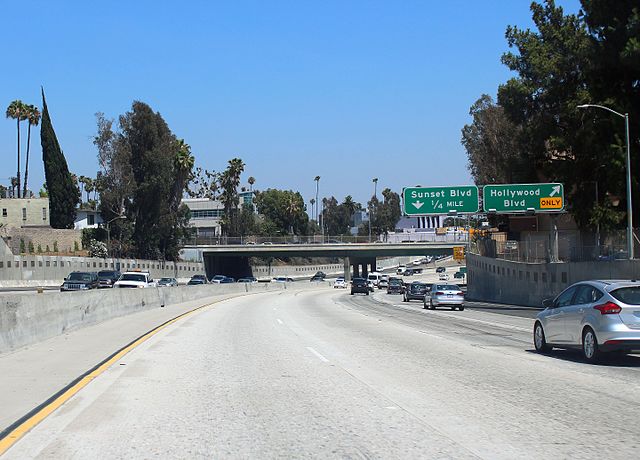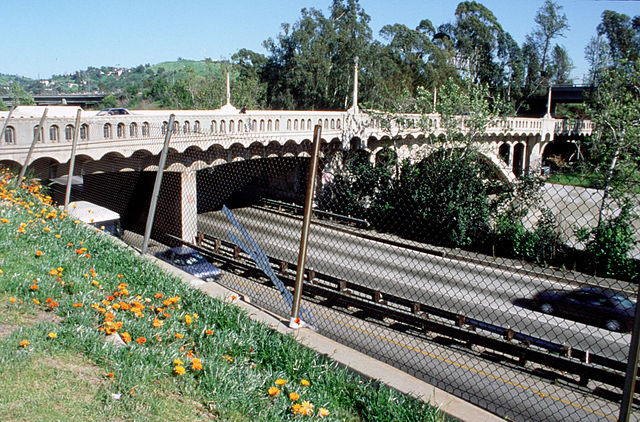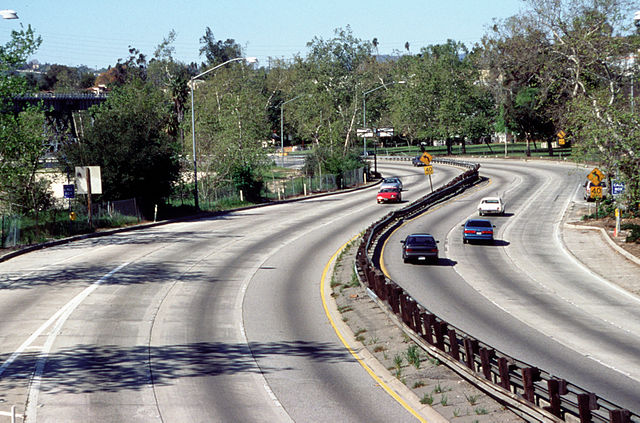The Hollywood Freeway is one of the principal freeways of Los Angeles, California and one of the busiest in the United States. It is the principal route through the Cahuenga Pass, the primary shortcut between the Los Angeles Basin and the San Fernando Valley. It is considered one of the most important freeways in the history of Los Angeles and instrumental in the development of the San Fernando Valley. It is the second oldest freeway in Los Angeles. From its southern end at the Four Level Interchange to its intersection with the Ventura Freeway in the southeastern San Fernando Valley, it is signed as part of U.S. Route 101. It is then signed as State Route 170 north to its terminus at the Golden State Freeway.
Southbound approaching Hollywood Boulevard
First segment built of the Hollywood Freeway through the Cahuenga Pass; Pacific Electric Railway trolleys ran down the center median of this freeway until 1952
Hollywood freeway through the Cahuenga Pass in 1972
Hollywood Freeway at night with Downtown L.A. in the background.
The Arroyo Seco Parkway, also known as the Pasadena Freeway, is one of the oldest freeways built in the United States. The parkway connects Los Angeles with Pasadena alongside the Arroyo Seco seasonal river. It is notable not only for being an early freeway, mostly opened in 1940, but for representing the transitional phase between early parkways and later freeways. It conformed to modern standards when it was built, but is now regarded as a narrow, outdated roadway. A 1953 extension brought the south end to the Four Level Interchange in downtown Los Angeles and a connection with the rest of the freeway system.
Northbound over the Los Angeles River
The Avenue 26 Bridge
Looking south from Marmion Way showing the passing lanes, differently-colored from using different paving materials.
Sign welcoming drivers to the parkway








